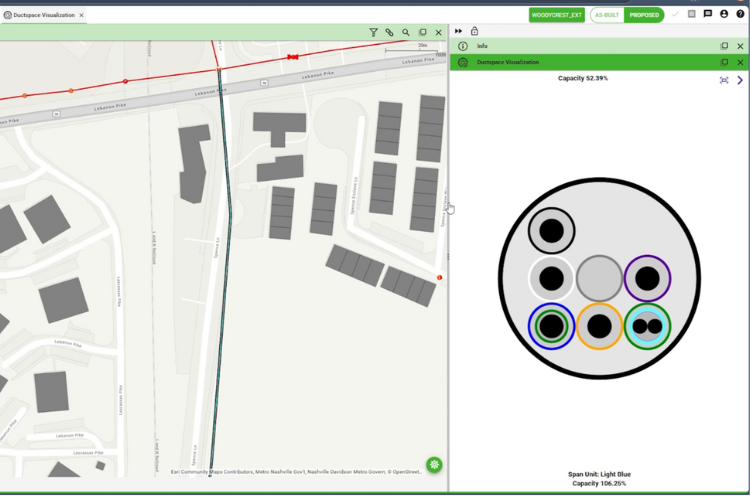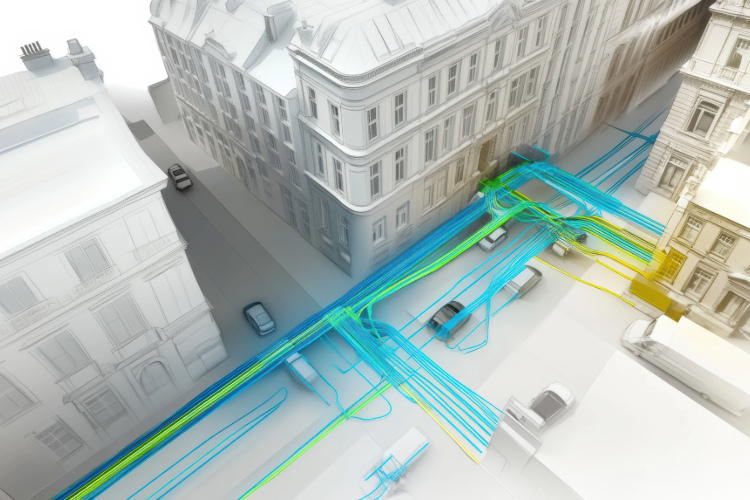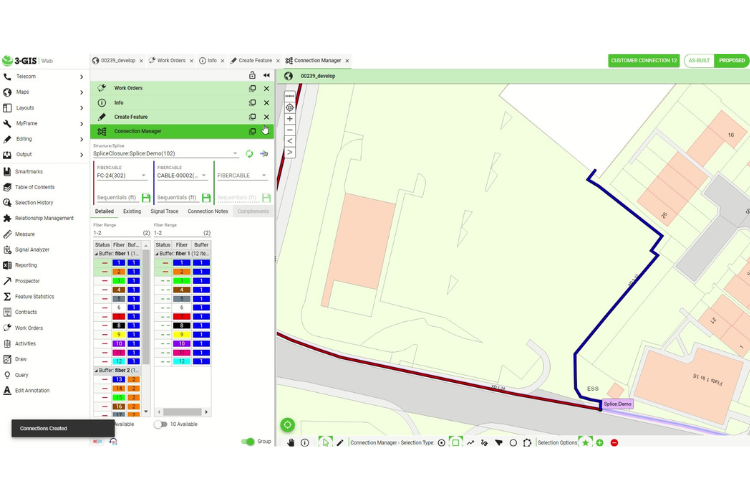Many of our customers are facing challenges as it relates to documenting specifications, data models, and output required to support the end-to-end design and construction process for fiber to the home (FTTH). This is true whether you are considering utilizing conventional CAD-based technology or leveraging a geographic information system (GIS). 3-GIS has faced these challenges head on with our customers and wanted to pass on some lessons learned for consideration.
FTTH design standards development
As our customers develop their strategies to facilitate fiber deployment in their markets, it has become increasingly evident the resources necessary to plan, budget, and design a network are not always readily available inside or outside of the organization, especially in smaller providers or municipalities considering making the jump to design, construct, and maintain FTTH networks. To this end, it's important to outline standards for their FTTH deployment which typically consist of the following supporting documents:
- FTTH design specification and architecture
- FTTH geodatabase model
- FTTH construction typical and assembly guide
- FTTH style guide
FTTH design specification and architecture
If you search for FTTH design specifications online, you’ll find surprisingly little information. This is likely because design specifications are typically tailored to a carrier’s unique network architecture and predefined hardware components. Municipalities and utilities often do not posses the experience necessary to develop and implement network architectures and typically rely on equipment manufacturers to facilitate their needs. While this approach has worked in the past, the direction is often weighted in favor of the manufacturer as opposed to the long-term plan for the municipality or provider.
To this end, it is necessary to develop a specification that can be shared and implemented by municipalities and providers during their FTTH deployment. This specification must provide the underlying elements of successful FTTH projects and take into account the reality of smaller target markets. The specification may need to cover multiple architectures to accommodate both large, dense city deployments and smaller, rural areas. A blended approach can help optimize network performance across diverse population densities within the target market. Ultimately, the design specification provides the foundation for all FTTH network planning, design, and development activities and would consist of accepted architecture, manufactured materials, labor activities, and data models. At a minimum, the design specification must take into account the following:
- Network architecture to include demand profiles, connectivity, and construction methods
- Approved material and sizing of network assets
- Connectivity requirements to include splicing
- Building and permitting constraints as mandated by local, state, and federal authorities
- Existing conditions such as leased assets and backbone connectivity
- Existing HUT locations
FTTH construction typical and assembly guide (typicals)
The construction typicals provide a foundation for understanding constructible elements of a design. Typicals can be as specific as outlining individual part components of a construction element or broad as an “assembly” of parts. Assemblies are often referred to as A, B, and C level parts. An A level part consists of a top level component of a network such as a splice enclosure. A B level part is a subset part of the A level part or, in this case, a tray inside of the splice enclosure. C level parts are typically optional and are installed as part of the construction process. An example of a C level part may be as small as a bolt. Oftentimes, networks are modeled to the A level assemblies for general pricing and down to B level assemblies to support construction bid documentation. Normalizing the existing construction typicals into a generic format with general pricing guidelines is critical to estimating both costs of and materials required for construction. This will provide municipalities and providers with a method for accurately pricing their network design prior to submitting for financial assistance from investors, bond markets, or existing reserves. To better prepare for the FTTH design and deployment, municipalities and providers should consider documenting the A and B level parts, at a minimum, to be used during construction and aligning them closely to the design specification.
FTTH geodatabase model and style guide
While design specification and typicals are critical to planning and designing a network, the geodatabase provides a standard mechanism for storing the data generated during the design. In addition, a standard geodatabase predicated on the design specification and typicals is critical in accurately portraying the cost of the network through the generation of bill of materials (BOM). The BOM is a summation of network features at the A and B level assemblies listed in the construction typicals with associated pricing. By automating the generation of the BOM, municipalities and providers are able to confidently deliver pricing information to their constituents and stakeholders. The geodatabase model will require strict adherence and alignment with the design specification and typicals to ensure generation of an accurate and reliable BOM. In addition, elements of the BOM can also inform the construction process by facilitating ordering of materials and preparing subcontracts for labor requirements. The attributes needed to support these activities, along with their input format, should be documented and tested in a sample database design before starting the FTTH design process.
The style guide is an extension of the data model and design specifications. It is a visual cue to the municipality and guides their users/contractors toward the creation of quality data inside of their designs. In addition, the style guide will act as a foundational element to the creation of BOMs, as well as a method for assessing the quality of the design. The deliverable style guide will note snapping expectation of features and the expected methodologies for drawing network features. Examples include value engineering underground assets to reduce costs by using industry-standard E, U, H, and J designs.
While many of these documents may exist and be maintained by those planning an FTTH deployment, municipalities and providers are often focused on the immediate urgency of executing their buildout. This causes an inability to evaluate the existing and future states for the program and its execution. Arguably, without the documents listed and strict adherence to them amongst the project stakeholders, programs will find themselves in a constant state of change and adjustment which can be avoided with proper planning and adherence to standards and specifications built to meet their program requirements.



